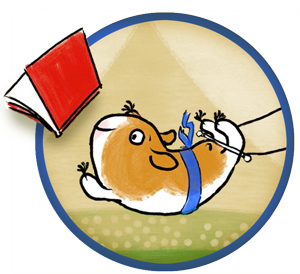Welcome back to our series, 20 QUESTIONS!,
where we answer questions about writing, reading, and author life.
(Note that we enjoy the series so much we’ve reset for a second round of 20.)
This month’s question:
What’s the first thing you remember writing or drawing, and how old were you?
Kirsten W. Larson
“I still have my first books from first grade, a book about snowy owls and the Niña, Pinta, and Santa Maria, complete with probably the best illustrations I’ve ever drawn (and that’s not saying much). Even as a kid, I was intrigued by true stories.”
—Kirsten W. Larson, author of THE FIRE OF STARS: The Life and Brilliance of the Woman Who Discovered What Stars Are Made Of, illus. Katherine Roy (Chronicle Books, 2023)
Lindsay H. Metcalf
“I recently came across a treasure trove of stories that first-grade me wrote in 1988. Although there is some fiction (a romance about a waltzing ostrich), the most prevalent genre is personal essay, with such titles as ‘My Pet,’ ‘Teeth,’ and ‘I Like Baby Ducklings.’ I always thought I was a good speller, but, well . . . see for yourself.”
—Lindsay H. Metcalf, co-editor with Keila V. Dawson and Jeanette Bradley of NO WORLD TOO BIG: Young People Fighting Global Climate Change, illus. Jeanette Bradley (Charlesbridge, 2023)
Kim Rogers
“I wrote my first poem in the first grade. It was raining that day, and I was filled with so much emotion that I had to put it down on paper. I wrote it on one of our worksheets and drew a picture of a girl under an umbrella next to it. When I got it back, my teacher told me that she really liked what I’d written.”
—Kim Rogers, author of A LETTER FOR BOB, illus. Jonathan Nelson (Heartdrum, 2023)
Valerie Bolling
“I wrote ‘poems’ in a bland, white marble composition book when I was six years old. Using the daily phonics lessons I’d learned, I created simple rhymes, like: There is a cat. It sat on a mat. It caught a rat.”
—Valerie Bolling, author of TOGETHER WE SWIM, illus. Kaylani Juanita (Chronicle, 2023)
Abi Cushman
“My parents bought me a blank book when I was in elementary school. I was very excited because I could make my story look like a REAL book. While this wasn’t the first thing I ever wrote, it was the first book I remember writing and illustrating. Here’s the logline: When Mr. Johnson falls ill with a disease no one knew of, Petunia the cat and Wilber the dog travel to Italy and starve on the street, until… Okay, there was no ending.”
—Abi Cushman, author-illustrator of WOMBATS ARE PRETTY WEIRD: A [Not So] Serious Guide (Greenwillow Books, 2023)















